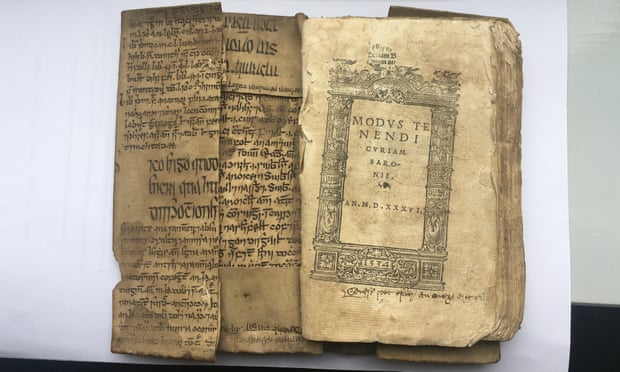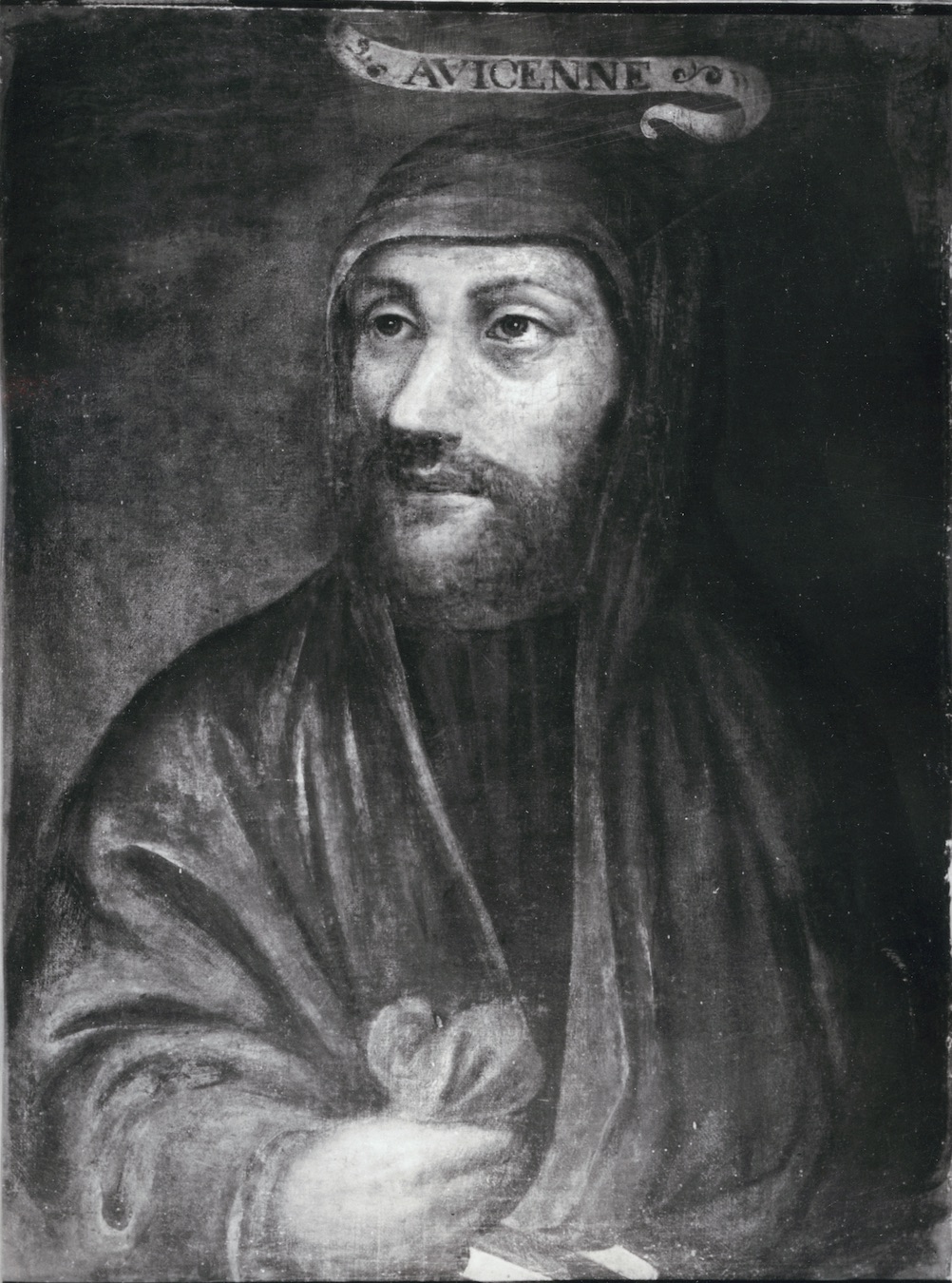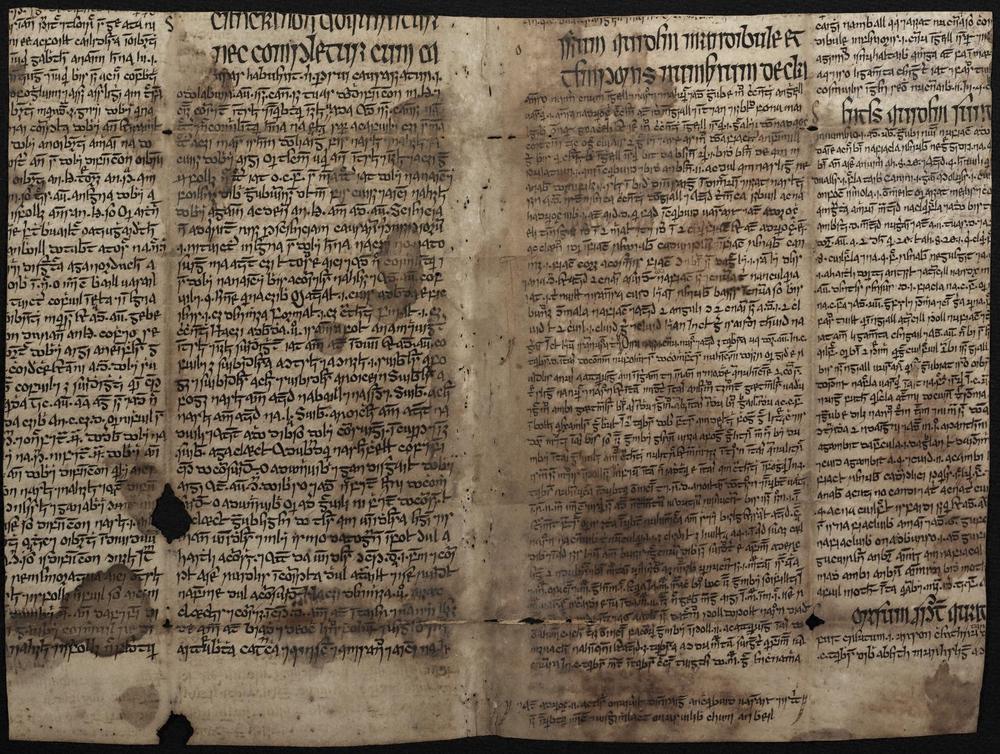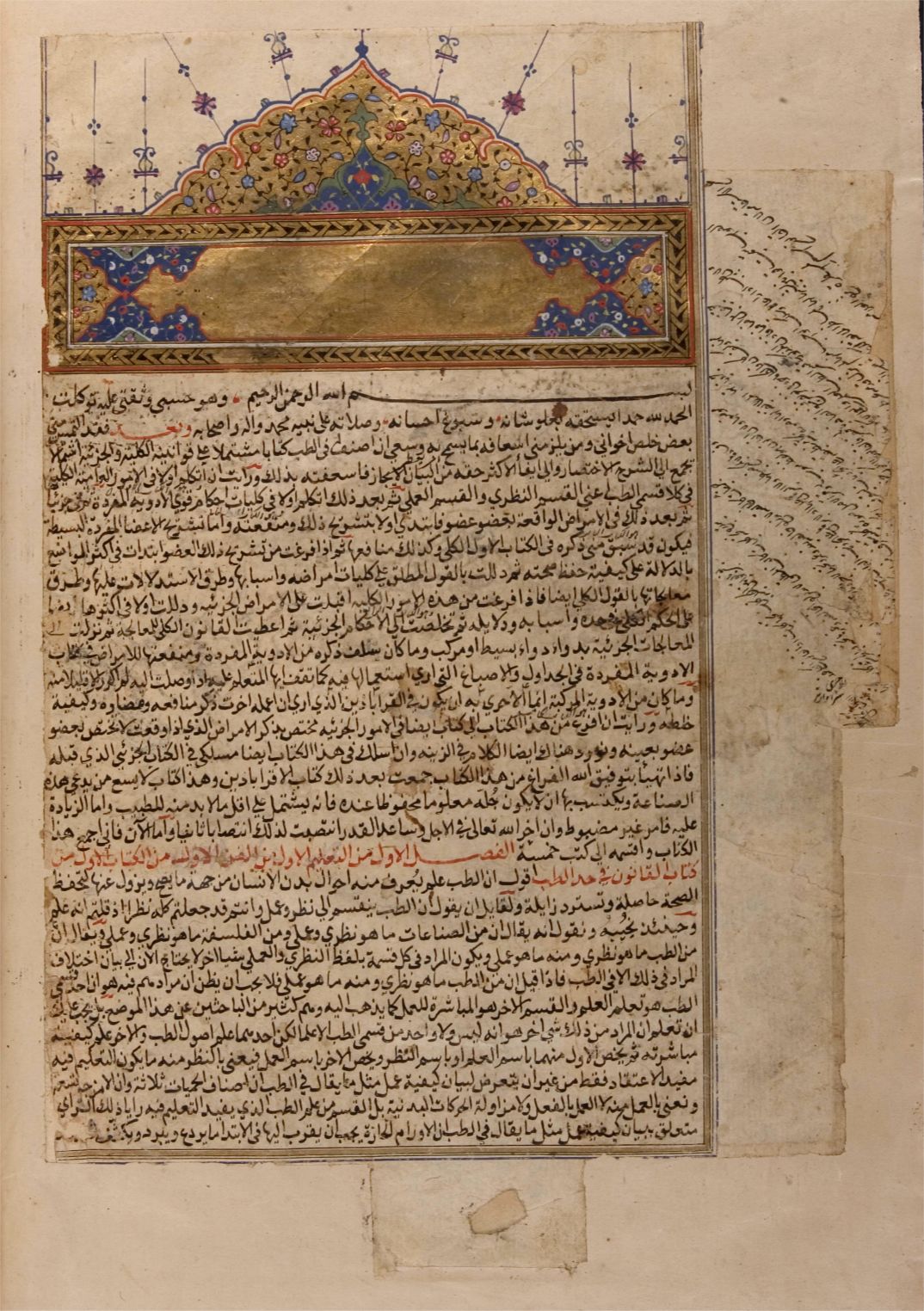Alison Flood published the article “Surprise as unknown Irish translation of Ibn Sīna discovered in spine of book” in the Guardian newspaper on March 7, 2019. The version printed below has been edited from its original version in the Guardian with (excepting one image) all images and accompanying captions not appearing in the original version in the Guardian.
Readers are encouraged the following link documenting the links of Greater Iran and Europa:
For more on contributions of Iranian scholarship and ingenuity to world civilization consult:
Contributions to Learning, Science, Knowledge, Technology & Medicine
=================================================================================
The manuscript of the ancient Iranian physician Ibn Sina’s (980-1037 CE) Canon of Medicine (published in c. 1025 CE) had been used to bind a later book, and shows that medieval Ireland’s medicine was in step with the rest of Europe.

The rediscovered fragment of Ibn Sīna’s Canon of Medicine, folded into the binding of a later book (Photograph: University College Cork, reproduced in the Guardian).
A 15th-century vellum manuscript of the writing of the revered Persian physician Ibn Sīna, or Avicenna, has been found being used to bind a later book, revealing for the first time that his seminal Canon of Medicine was translated into Irish.
The manuscript had been trimmed, folded and stitched to the spine of a pocket-sized Latin manual about local administration, which was printed in London in the 1530s. It had been owned by the same family in Cornwall since the 16th century. When they decided to satisfy their curiosity about the unusual binding last year, they consulted University College Cork professor of modern Irish professor Pádraig Ó Macháin, who said he “knew pretty much straight away” that it was a significant find. As noted by professor Ó Macháin:
“It really was very, very exciting, one of those moments which makes life worthwhile …”
Professor Aoibheann Nic Dhonnchadha of the Dublin Institute for Advanced Studies, an expert on medieval Irish medicine, identified the text as a fragment of Ibn Sīna’s Canon of Medicine, a previously unknown Irish translation. Ibn Sīna lived between 980 and 1037 and has been one of Iran’s most influential scholars.

A medieval portrait of Ibn Sina (Avicenna) (980-1037) drafted in c.1271, currently housed in the Bibliothèque interuniversitaire de santé in Paris (Image: Public Domain). For more, read the article “Persian Scholar Ibn Sina first came up with idea of Quarantine”…
Professor Ó Macháin further avers:
“While there are references to Avicenna scattered through other medical texts in Irish, we now know, for the first time, that the Canon was translated into Irish. This fragment must have come from a seriously big manuscript. The use of parchment cut from old manuscripts as a binding for later books is not unusual in European tradition, but this is the first time that a case has come to light of such a clear example of the practice in a Gaelic context.”

The “Avicenna Fragment” that was removed (and flattened) from the Irish book for display (Source: The Independent Newspaper of Ireland).
Sīna’s Canon of Medicine was a medical encyclopaedia which was seen as the standard medical text in the Islamic world and across Europe for more than six centuries. The Irish fragment includes parts of the opening chapters, tackling the physiology of the jaw, the nose and the back, with the section on the nose the least fragmentary. It details in particular the “three uses” of the bones of the nose – with professor Ó Macháin noting that the process was:
“…to retain the air in its vacuum to strengthen the brain constantly”, to help “to articulate the sound of every letter”, and “the third use: the superfluities that are expelled from the brain, part of them nourish the nose and the remainder is expelled from it as a superfluity. And it is for that reason that we have called the bones that are in the nose … a helping instrument, for it is through them that the superfluities are expelled, like the blowing of a bellows.”

The first page of Avicenna’s Canon, in a manuscript dated to c. 1596/7, currently housed in Yale University, Medical Historical Library, Cushing Arabic ms. 5) (Image: Public Domain). Readers are also invited to consult the following article “Ibn Sina, Persian Polymath and Physician, Never Demanded Money from his Patients” …
Professor Ó Macháin said that medical scholarship in medieval Gaelic Ireland was on a par with that practiced on the continent, with evidence of Irish scholars travelling to European medical schools and bringing their learning back to Ireland. As noted by professor Ó Macháin:
“The reason [the fragment] was translated was that Irish was the language of learning in medieval Ireland, whereas Latin fulfilled that role everywhere else …”
Avicenna in Ireland: A manuscript discovery with Professor Padraig O’Machain (Source: Mediavalists in YouTube). This video outlines the amazing connection between Iranian and Irish medicine as outlined by the discovery of a medieval fragment of Ibn Sina’s (Avicenna’s) Canon of Medicine bound in a sixteenth-century Irish book. In this video, professor Pádraig O’Macháin discusses how his discovery provides physical evidence that Avicenna was known in Ireland with his works having been translated and shared in the Gaelic language. For more see Medievalists …
It would have been cut up, he said, following the Elizabethan conquest of Ireland, which put an end to the old Gaelic society. Professor Ó Macháin further outlines the (anti-Celtic) cultural engineering policies of the English establishment:
“Early universities in Ireland, supported by the Gaelic lordships, that all fell asunder as the Elizabethan conquest proceeded. Books like these were destroyed, and others were damaged and cut up, and it’s in that wider context you have to see whoever owned this book clearly came into possession of some such manuscript and thought nothing of trimming it and making a binding of it …”
The book’s owners agreed that the binding should be removed, opened out and digitized. It can now be seen on the Irish Script on Screen website. Professor Ó Macháin outlines the inherent value of this learning and education process:
“The discovery and digitization of the text was a scholarly adventure … One of those occasions when many people, not least the owners of the book, were working together towards a common purpose for the cause of pure learning. It was a pleasure to have been able to make it happen and to have been part of it.”

Padraig O’Machain of the University College Cork (UCC) professor of modern Irish (Source: Early Irish Maynooth). An Advanced Laureate Awardee, Professor Pádraig Ó Macháin leads a humanities-led scientific study of the materials used in the creation and writing of medieval Irish language manuscripts.



